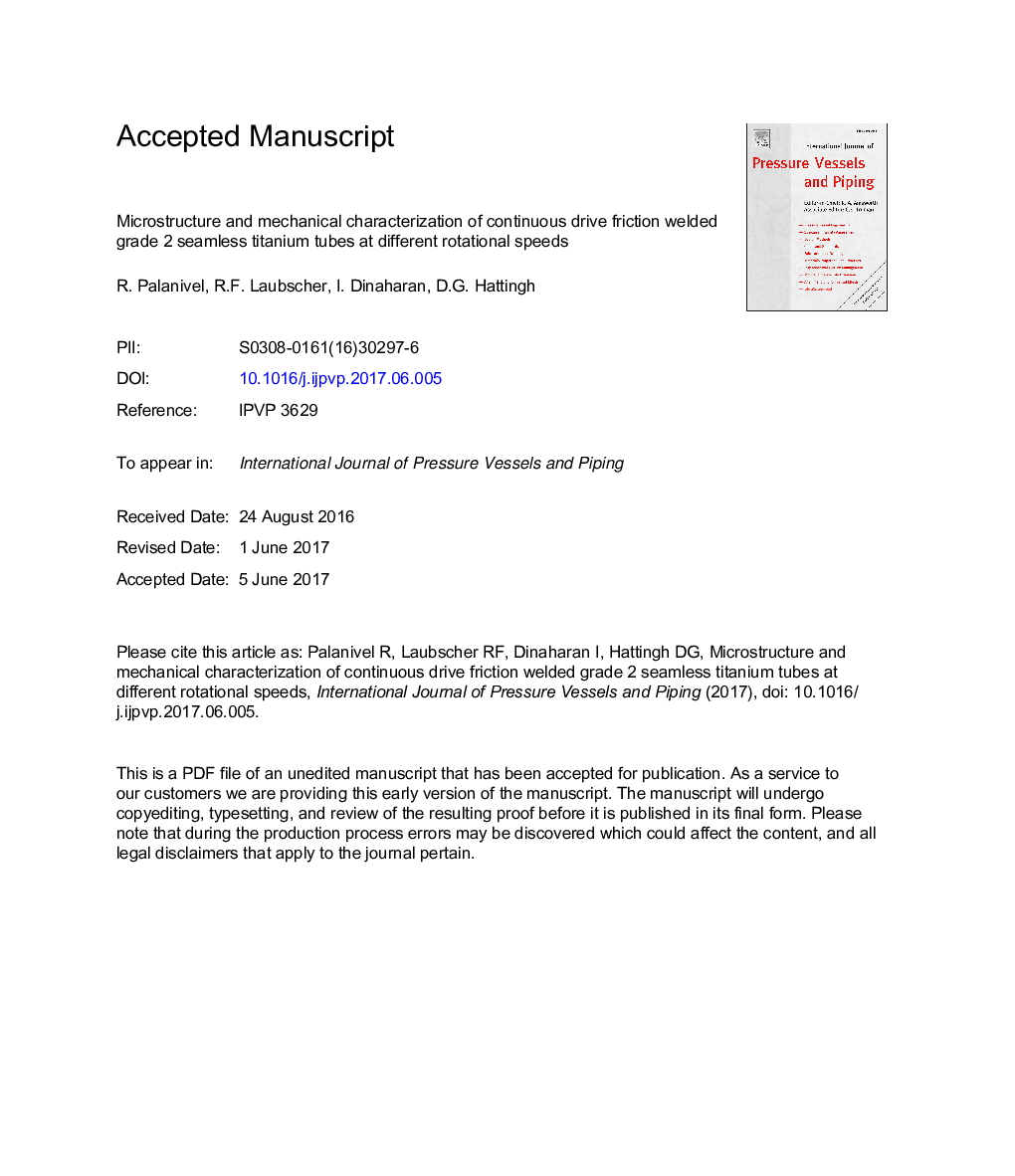| Article ID | Journal | Published Year | Pages | File Type |
|---|---|---|---|---|
| 5016877 | International Journal of Pressure Vessels and Piping | 2017 | 37 Pages |
Abstract
Friction welding is a near ideal process to join thin metallic tubes. Grade 2 titanium tubes of outer diameter 60Â mm and wall thickness 3.9Â mm were joined by friction welding. The effect of rotational speed on microstructure was evaluated for five different speeds. The process parameters were recorded during welding. The microstructure was observed using optical microscopy and electron back scattered diagram. The results revealed that the rotational speed had a significant effect on the process parameters, microstructure and joint integrity. An increase in rotational speed reduced the torque and rate of frictional power input and extended the welding duration. The rate of deformation increased with rotational speed and refined the grains in the weld zone. The grain size was observed to coarsen from the center of the weld zone towards the flash. The grain structure in the heat affected zone (HAZ) was identical to the parent metal. A maximum joint efficiency of 98.3% was achieved at rotational speed of 2200Â rpm. The details of microhardness, failure location and fracture surface were reported.
Related Topics
Physical Sciences and Engineering
Engineering
Mechanical Engineering
Authors
R. Palanivel, R.F. Laubscher, I. Dinaharan, D.G. Hattingh,
